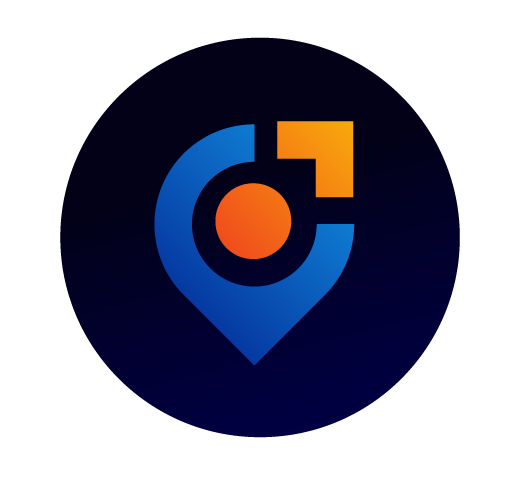You’ve seen teams spark new ideas, but can they deliver results too? Blending creativity with strategy is the key to thriving in the modern job market.
Employers now prioritize creative problem-solvers who also use clear methods to meet goals. Combining these skills elevates both your profile and your team’s performance long-term.
Get ready to discover proven ways to unite creative instincts with tactical planning—plus do-it-today actions that move projects ahead and make your career stand out.
Using Daily Workflows to Intertwine Fresh Ideas with Thoughtful Planning
Bringing creativity into your routines can help unlock new solutions. Paired with deliberate planning, this approach improves the flow and impact of your workday projects instantly.
Teams that brainstorm together and organize their actions strategically produce results that are both imaginative and consistently effective.
Creating Flexible Rituals for Ideation and Execution
Lead with five minutes of open brainstorming, followed by task mapping. This signals that wild ideas are welcome, but focused follow-up matters just as much for performance.
Allow team members to share one creative suggestion per meeting, then outline next steps. Colleagues hear each other and see action taken—this increases morale and clarity.
End each week by documenting one creative solution that led to progress. This keeps innovation visible, encouraging everyone to replicate what works and improve next time.
Scenario: Aligning Inspiration with Deadlines
A manager notices designers bouncing ideas on Monday, but tasks miss deadlines. She sets a rapid-fire idea session before planning, then plots deadlines on a public calendar.
She emails, “Let’s share one big idea and one step for this week’s project. Here are our target dates—let’s hit them.” The results arrive on time and feel fresh.
This technique matches freeform thinking with accountability, turning daily creativity into reliable outcomes that impress clients and boost team confidence.
| Ritual | Purpose | How to Execute | Takeaway |
|---|---|---|---|
| Morning Brainstorm | Generate creative options fast | Dedicate 10 minutes at the start of day | Use this to avoid defaulting to ‘usual’ solutions |
| Weekly Action Review | Translate ideas into steps | Meet Fridays to select & plan one new approach | Keeps teams from losing momentum |
| Feedback Rounds | Sharpen both ideas and action items | Pair each idea with two critical follow-ups | Balanced feedback creates progress, not just talk |
| Public Progress Boards | Make progress visible | Update results each week for all to see | Public results motivate faster, bolder tries |
| Win Stories | Document successful creative actions | Share quick impact stories at meetings | Inspires repeated, practical creativity |
Building Habits That Encourage Both Creative Risk and Smart Prioritization
Set up routines where testing creative choices feels rewarding, but decisions get reviewed with specific priorities in mind. This brings balance and strengths to any team at work.
Celebrate team bravery in trying new tactics, yet always analyze which ones deliver concrete value for business or clients—don’t separate creative ambition from return on investment.
Designing Habit Loops That Drive Results
Use cues, like starting meetings with “What if?” questions, to invite creative thinking as a habit. This builds comfort with sharing new ideas regularly, not just on special occasions.
End each project review with “What worked for us this time?” This rewards strategic thinking and creative risk by spotlighting the impact of both, making people want to repeat the cycle.
- Encourage pitching “wild card” ideas by promising feedback at the next meeting; this keeps energy high and surfaces unexpected angles colleagues might overlook.
- Reward not only outcomes but also creative process steps in weekly shout-outs; it reminds teams their way of working matters as much as final results.
- Assign rotating roles for devil’s advocate at brainstorming sessions. This ensures every creative idea is tested with practical questions before moving forward, reducing risk.
- Rate ideas by “fun to try” vs. “fits our strategy”; this direct comparison helps teams select what’s worth exploring without feeling shut down for being imaginative.
- Follow each new experiment by scheduling a mini-retrospective; here, teams share learning, not blame, which strengthens improvement and future willingness to innovate.
Adopt these rewards and routines consistently, and you’ll create an environment where creativity and focused strategy build trust and sustainable growth for your workplace.
Role Modeling Actions for Balanced Growth
Leaders who show vulnerability (“I tried this, it bombed, but here’s what I learned for next time”) encourage employees to contribute riskier ideas without fear.
Managers who highlight both creative and efficient solutions make it clear that performance depends on dual strengths, not just one or the other, to move a project forward.
- Schedule open forums where anyone can suggest improvements, reinforcing that new approaches are always welcome and can be judged on clear criteria for impact and feasibility.
- Publish “fail forward” stories internally, so risk feels normalized and teams know that not every creative leap pays off—what matters is the learning and resilience shown after.
- Pair workers from different departments for monthly mini-projects; combining varied backgrounds uncovers practical, creative angles you wouldn’t see with homogeneous teams.
- Review performance evaluations with equal weight on idea generation and effective delivery, so neither attribute is neglected during development conversations or promotions.
- Host quarterly town halls where company leadership answers questions about both innovation failures and successes, demystifying the process and encouraging transparent communication.
The visible actions of leadership set the tone for a culture that truly values creativity as a workhorse, not just as decoration, fueling steady progress in the job market.
Amplifying Job Market Value by Combining Skills for Measurable Outcomes
Combining creativity and strategy in your approach gives hiring managers and colleagues a concrete reason to rely on you as a project shaper, not just an idea generator.
Those who showcase inventive thinking alongside systematic execution consistently become go-to contributors in the eyes of recruiters and leadership teams in every growing industry.
Demonstrating This Balance in Applications and Interviews
When crafting a resume, highlight situations where a creative solution was structured, tracked, and brought to completion with visible results. This frames you as both imaginative and disciplined.
In interviews, use the format: “Here’s a challenge, here’s the new approach I introduced, here’s how I tracked it, here’s what changed afterwards.” Keep your phrasing grounded and specific.
When asked about creativity, share exact figures—like “That campaign generated 15% higher engagement after I mapped ideas to targeted audiences and measured their response.” Numbers solidify your impact.
Translating Skills to Cross-Functional Impact
Share practical stories with hiring panels: “On a cross-department team, I sketched a new workflow using whiteboards. We tested it, logged data, and improved efficiency by 12%.”
Outline how creative proposals moved through testing, feedback, and revision, then hit key business objectives. Use body language—like open arms and eye contact—to project confidence and clarity.
Summarize lessons: “Next time, I’ll begin with user feedback sessions to design creative options that fit our targets even faster.” This reinforces your cycle of creative learning and clear results.
Connecting Creative Thinking with Strategic Action for Market-Ready Growth
Creative energy powers fresh approaches, but strategy anchors progress. When you mix them, your work stands apart in productivity and relevance—this is in high demand every day.
The job market seeks contributors who deliver both: meaningful new ideas and a roadmap for action, measured in results. Blending creativity and strategy creates a repeatable way to achieve standout outcomes.
Every career gains an edge through this combination. Begin today by pairing your next creative hunch with a checklist or timeline. Your future opportunities will thank you for it.



